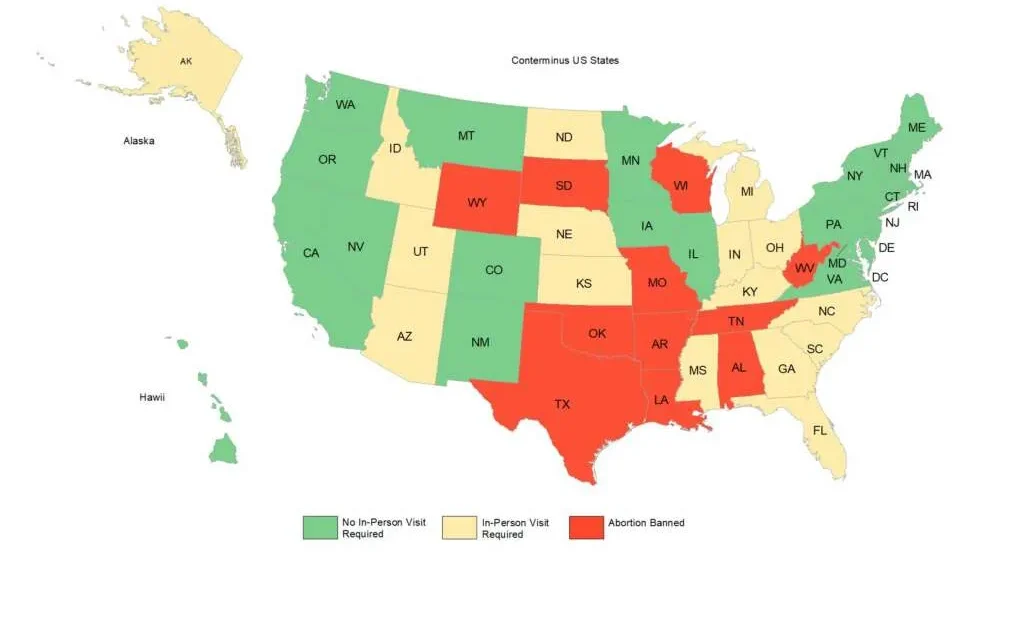The landscape of abortion rights in the United States has undergone a dramatic transformation following the 2022 Supreme Court decision to overturn Roe v. Wade, which had previously guaranteed a nationwide right to abortion. Since that momentous ruling, abortion laws across the country have been in a state of flux, with various states enacting bans, restrictions, and protections based on their political climate and public sentiment. As of February 2025, abortion laws vary widely across the United States, with some states implementing near-total bans, while others have codified strong protections for abortion access.
The overturned Roe v. Wade ruling effectively shifted the responsibility of regulating abortion laws to individual states, leading to a patchwork of regulations across the country. A dozen states, primarily in the South and Midwest, have enacted near-total abortion bans, with some even prohibiting the procedure at conception or shortly after. These laws are often accompanied by limited exceptions, such as for cases of rape, incest, or medical emergencies. In these states, access to abortion clinics has been severely restricted, leaving women with limited options and forcing many to travel to other states for care.
In contrast, states on the coasts, such as California, New York, and Oregon, have taken a different approach by enacting laws that protect abortion rights and ensure access to the procedure throughout the pregnancy. These states have worked to enshrine abortion access into their state constitutions, with voters overwhelmingly supporting measures that safeguard the right to choose. California, for example, passed Proposition 1 in 2022, which added abortion rights to the state constitution, and Oregon has long been a leader in reproductive health rights. These states not only provide abortion access but also support comprehensive reproductive health services, including contraception and sex education.
There are also states that have enacted significant restrictions, such as those banning abortion after six weeks of pregnancy. These laws have been heavily contested in the courts, with several of them currently being challenged or temporarily blocked. For instance, Georgia and Florida have passed six-week bans, but these laws have faced significant legal hurdles, with some courts issuing temporary injunctions while litigation continues. Six-week bans are particularly contentious because they often prevent women from accessing abortion before they even realize they are pregnant, as many do not discover their pregnancy until after the six-week mark.
In addition to the ongoing legal battles, some states are in a state of “in flux,” where the future of abortion laws remains uncertain. In Missouri, for example, the state passed a near-total abortion ban following the overturning of Roe v. Wade, but legal challenges have led to a judge ruling that the state’s abortion ban is unenforceable. In Montana, voters enshrined the right to abortion until fetal viability in the state’s constitution in 2024, making it one of the few states to protect abortion rights through the ballot box.
At the same time, several states are witnessing debates over the scope of abortion laws. In Arizona, a 15-week abortion ban was enacted, but after voters approved a constitutional amendment in November 2024, the state is set to shift to a viability standard, meaning abortions can be performed until fetal viability, typically around 24 weeks. Similarly, Nebraska voters enshrined a 12-week abortion ban in the state constitution in 2024, underscoring the ongoing political divide over abortion rights.
In states where abortion bans are in place, the language surrounding exceptions remains a significant point of contention. While some states allow abortions in cases of rape, incest, or medical emergencies, the wording of these exceptions is often vague, leading to confusion and delays in care. In many instances, doctors have expressed concerns about the risks of providing care under such ambiguous conditions, which could lead to legal consequences if the exceptions are not interpreted in a manner that aligns with state laws. The lack of clear guidance in these states has created a climate of fear and uncertainty among healthcare providers, many of whom are unsure about when they can legally perform an abortion.
The legal uncertainty surrounding abortion laws has also led to significant challenges for healthcare providers, especially in states where abortion is banned or severely restricted. Many clinics have been forced to close or scale back their services due to the legal and financial pressures created by these restrictions. This has had a particularly harsh impact on low-income women and women of color, who are disproportionately affected by both limited access to abortion services and the financial barriers to traveling out of state for care.
Meanwhile, in the aftermath of the 2024 elections, some states have seen renewed efforts to protect abortion access through ballot measures and legislative action. In Michigan, voters approved a constitutional amendment in 2022 that enshrined the right to abortion, ensuring that the state would not follow the path of its neighbors who have implemented restrictive abortion laws. Similarly, in Ohio, voters passed a constitutional amendment in 2023 that protected the right to an abortion, preventing the state from following in the footsteps of its conservative neighbors, such as Kentucky and West Virginia.
The ongoing battle over abortion rights in the United States highlights the deep political and cultural divides within the country. While some states have moved aggressively to restrict or ban abortion access, others have taken steps to ensure that abortion remains a safe and accessible option for women. As the legal landscape continues to evolve, it is likely that we will see more states passing measures to either protect or restrict abortion rights, further complicating the national conversation on reproductive health.
The future of abortion access in the United States will continue to be shaped by legal challenges, public opinion, and political advocacy. As states navigate these complex issues, the country faces a deeply divided debate over the role of government in regulating reproductive rights and the fundamental right of individuals to make decisions about their own bodies. With millions of women across the country depending on access to safe and legal abortion services, the outcome of this ongoing battle will have profound implications for generations to come.
In conclusion, the tracking of abortion laws across the United States reveals a deeply fragmented and polarized landscape, with each state taking a different approach to reproductive rights. While some states have embraced abortion access as a fundamental right, others have sought to severely limit or outright ban the procedure. The result is a system where women’s access to abortion care is determined by their geographical location, with those in restrictive states facing significant barriers to obtaining the care they need. As legal battles continue to unfold and public opinion shifts, the future of abortion rights in the United States remains uncertain, and the consequences of these decisions will be felt for years to come.























